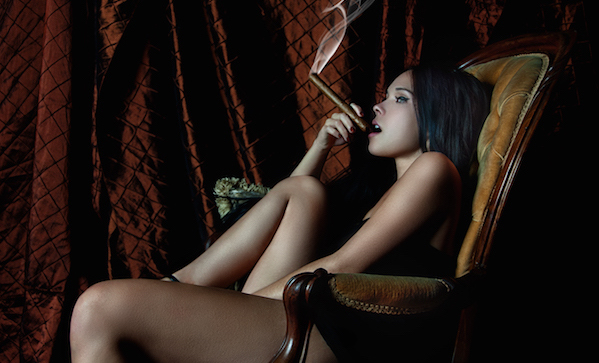Who is Richard Carleton Hacker? Well, the LA Times calls him the ‘cigar czar’. He’s written more than five hundred articles on the topic, but if you really want to know cigars, you need to pick up his book: The Ultimate Cigar Book ($30).
What makes a cigar book ‘ultimate’? Well, this one gets into the history of cigars, how they’re made, how to judge a good cigar, how to properly light one, the etiquette of smoking, how to properly store cigars, how to use cigar accessories, how to pair cigars with spirits, and a rundown of major cigar brands. Here’s a short rundown of some of the things we’ve learned.
A Cuban Miracle
Tobacco replaced coffee as Cuba’s principle export in 1845, and the Caribbean nation hasn’t looked back.
Those Aren’t Pipes
In the late 1800s, gentlemen often used cheroot holders to smoke, instead of putting the cigar directly to their lips. Cheroot holders look a little like pipes.
Cigar Quips
In 1920, Thomas Riley Marshall, Woodrow Wilson’s Vice President, grew sick of listening to the speakers in the Senate tell him “what the country needs”. He responded with the witticism: “What this country needs is a really good five cent cigar.” By 1921, his wish was granted.
The Need for Moisture
Dunhill started offering their cigars in hermetically sealed tins; they were amongst the first to recognise the value of humidifying cigars.
About That Embargo . . .
Twelve hours before JFK announced the Cuban embargo, he ordered his press secretary to buy one thousand H. Upmann Petit Coronas. His press secretary managed to gather twelve hundred of those babies.
The Embargo Economy
Prior to the 1962 embargo, Cuban tobacco sold for $150 a bale. By the year’s end, the price shot up to $1,000 dollars a bale.
Cigar Print?
Comedian George Burns was the only star to put his cigar print on his square of the Hollywood Walk of Fame.
Exile Brands
Because of the embargo, there has arisen a class of “exile brands”; that is, brands still made in Cuba but also in another country because said brands owners have fled. The Dominican Republic has Romeo y Julieta, H. Upmann, and Partagas, and Honduras has Hoyo de Monterrey, El Rey del Mundo, and Punch.


